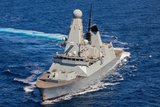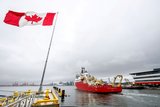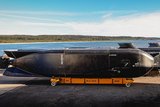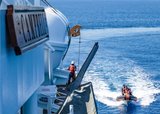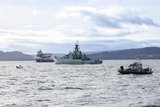US Navy takes receipt of next-generation landing craft
The SSC LCAC 108 recently passed US Navy readiness and capability tests. (Photo: Textron Systems)
The US Navy has accepted delivery of a Ship-to-Shore Connector (SSC), Landing Craft, Air Cushion (LCAC) 108 from Textron Systems following the completion of acceptance trials conducted by the Navy’s Board of Inspection and Survey.
The SSC LCAC 108 undertook a series of readiness and capability tests to ensure it could meet the requirements set out by the US Navy, with delivery representing the official transfer of the ship to the US Navy.
Similar in size and dimension to the legacy LCACs they will replace, the next generation LCACs have been designed to be compatible with existing, well deck-equipped amphibious ships, the Expeditionary Sea Base and the Expeditionary Transfer Dock.
Capt. Jason Grabelle, program manager for Amphibious Assault and Connectors Programs for the Program Executive Office (PEO) Ships, commented: ‘These next-generation craft provide our Navy and Marine Corps team with essential agility and speed to complete their missions.
‘SSC provides the fleet with agility and speed to assist with current and future mission requirements,’ he added.
LCACs can carry payloads of between 60–75 tons and have been used to transport weapon systems, equipment, cargo and assault element personnel over-the-beach, as well as in other battle environments and conditions.
Textron Systems also confirmed it was in ‘serial production’ on LCACs 109-120.
Related Programmes in Defence Insight
Related Equipment in Defence Insight
More from Naval Warfare
-
![US Coast Guard pursues solutions to increase maritime domain dominance]()
US Coast Guard pursues solutions to increase maritime domain dominance
The USCG is seeking technologies, services and applications to better connect its assets and speed up the decision-making process.
-
![Indo Pacific 2025: Autonomous systems reigned but can the Australian Defence Force afford it?]()
Indo Pacific 2025: Autonomous systems reigned but can the Australian Defence Force afford it?
Multiple autonomous systems and technologies were on display at this year’s Indo Pacific, but questions remain over how the Australian Department of Defence will balance the books.
-
![How the UK Royal Navy is powering up its hybrid fleet to combat new threats]()
How the UK Royal Navy is powering up its hybrid fleet to combat new threats
Since it announced its move towards a new “hybrid navy” earlier this year, the force has announced a number of new uncrewed technologies in the works.








